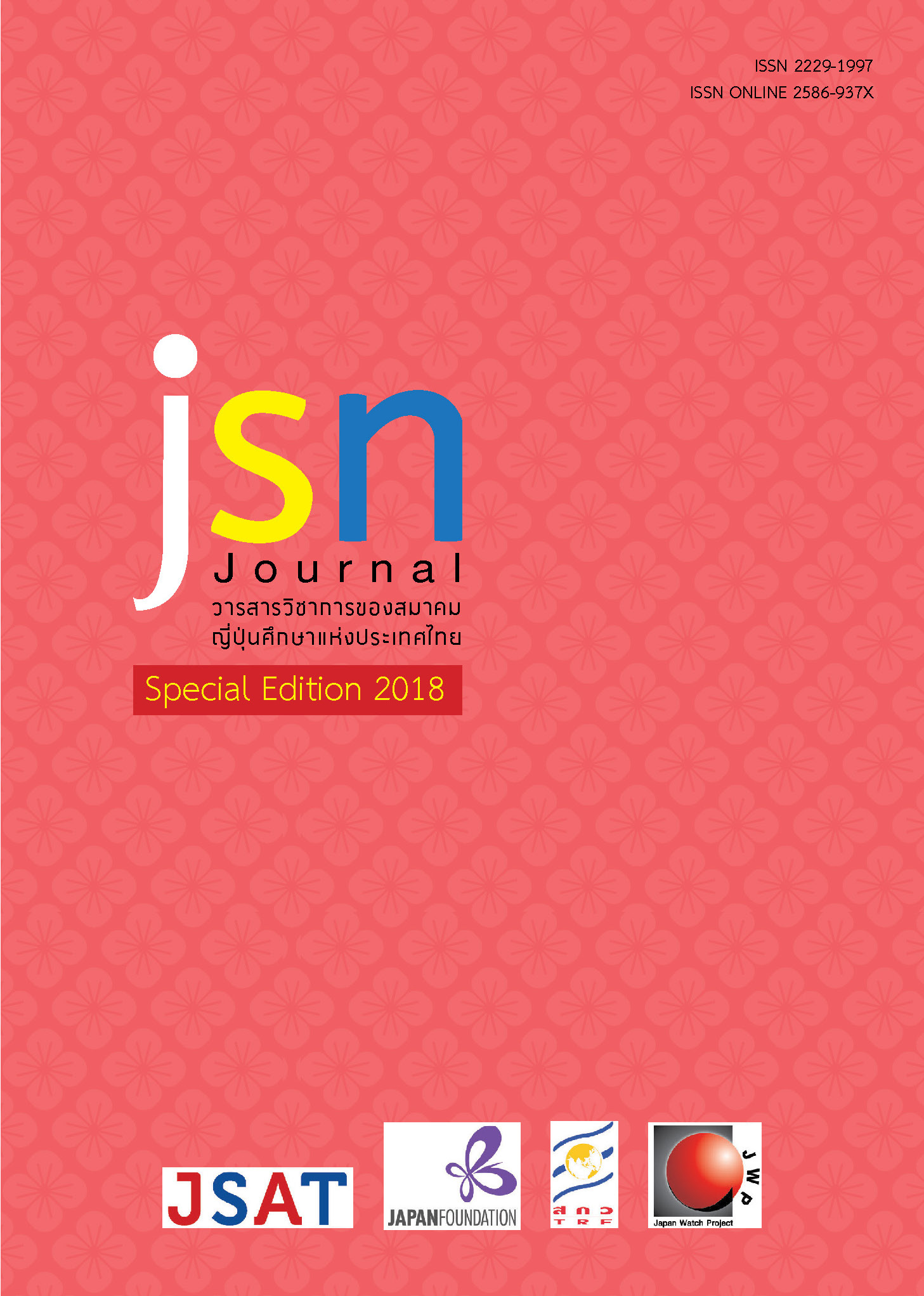Metaphors of Impermanence in Noh Plays
Main Article Content
Abstract
This article aims to study conceptual metaphors of impermanence in Noh plays. Data was collected from 9 Genzai Noh plays as Nakamitsu, Hibariyama, Kagekiyo, Yuya, Tsuchiguruma, Koya Monogurui, Take no Yuki, Shichikiochi, and Kanawa. The study found that metaphors of impermanence in Noh plays were dew, sound,
color, dream, wind, boat, flower, and moon. These reflected uncertainty, change, and transience of things and lives on earth. Impermanence concept may be said to be one of Bhuddhism instruments to relieve grieve for people in medieval period who always faced suffering, difficulties, and loss. This made them come to term with reality on earth and live on. Furthermore, impermanence idea took part in stimulating people to be aware of their duties and ethics, for example, a child should show gratitude to parents. Like in Kagekiyo, Hitomaru, a daughter, rushed to find her father whom she has never met since she was born. In Yuya,
Yuya, a daughter, has tried to go back to take care of her old and sick mother before she died.
Article Details
ข้อความและข้อคิดเห็นต่างๆ ในบทความเป็นของผู้เขียนบทความนั้นๆ ไม่ใช่ความเห็นของกองบรรณาธิการหรือของวารสาร jsn Journal
References
ศิริพร ภักดีผาสุข. (2561). ความสัมพันธ์ระหว่างภาษากับอัตลักษณ์และแนวทางการนำมาศึกษาภาษาไทย. กรุงเทพฯ : โครงการเผยแพร่ผลงานวิชาการ คณะอักษรศาสตร์ จุฬาลงกรณ์มหาวิทยาลัย
อรรถยา สุวรรณระดา. (2557). ทัศนะการมองโลกในวรรณกรรมโฮโจกิ บันทึกเหตุการณ์ภัยพิบัติเมื่อ 800 ปี ก่อนของญี่ปุ่น. กรุงเทพฯ : โครงการเผยแพร่ผลงานวิชาการ คณะอักษรศาสตร์ จุฬาลงกรณ์มหาวิทยาลัย
อรรถยา สุวรรณระดา. (2558). ประวัติวรรณคดีญี่ปุ่น พิมพ์ครั้งที่ 2 ฉบับปรับปรุง. กรุงเทพฯ : สำนักพิมพ์แห่งจุฬาลงกรณ์มหาวิทยาลัย
小沢正夫 (1979).『古今和歌集』小学館
梶原正昭・山下弘明 (2005).『平家物語上』岩波書店
佐成健太郎 (1953).『謡曲大観第1巻』明治書院
佐成健太郎 (1954a).『謡曲大観第2巻』明治書院
佐成健太郎 (1954b).『謡曲大観第3巻』明治書院
佐成健太郎 (1954c).『謡曲大観第4巻』明治書院
佐成健太郎 (1954d).『謡曲大観第5巻』明治書院
新村出 (2018).『広辞苑』岩波書店


